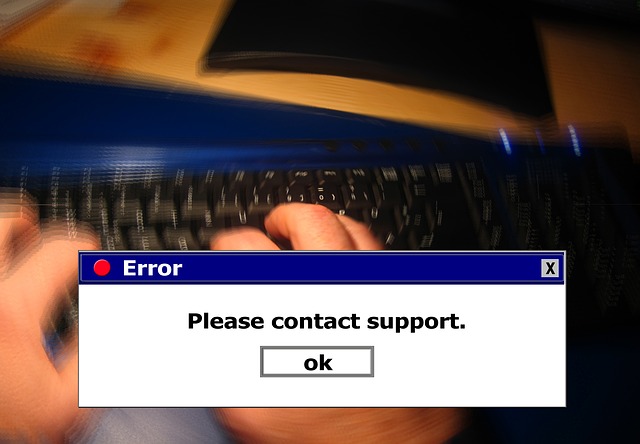Article first published 21st September 2017
I recently had the opportunity to take a short break between contacts and booked a holiday in Cuba. Unknown to me this was about to coincided with Hurricane Irma (Sept 2017) moving from the Mid Atlantic across the range of islands. Out of every life experience I try to draw some learnings, especially in the ITSM space and this once in a lifetime event certainly taught me a lot. So, let’s look at what happened and draw the comparison.
We started our break in the Cayo Coco region, which quickly became known to be in the flight path. Once this was confirmed we were moved West, 9 hours across the island to an area with hotel capacity to take the 1200 people and outside of the known path. Once established there, the hurricane changed again and our hotel was put on hurricane watch and then full blown emergency procedures implemented as the eye was due to pass close by.
Whilst this is predominantly an ITSM reflection it would be wrong not to acknowledge both the Melia Hotel Managers at Cayo Coco and Valadero and our Thomas Cook holiday rep, people who demonstrated incredible professionalism in their operational ranks .
So, once it was evident that our evacuation location was now in the direct path, all residents were briefed and taken to a safe area under the hotel. This was a large area under the hotel which actually housed the kitchen prep and inbound delivery area. The Hotel Manager assumed the crisis manager role and introduced his deputy and the crisis operating model (in three languages) and then the carrier reps provided specific client updates through the duration.
Putting the crisis management element to one side, part of the focus of this article is on service. We were in the throes of a natural disaster with over 500 “paying” guests. It would have been easy to drop the level of service and yet throughout the incident food was continually provided, the toilets were cleaned and the holiday makers endured over 18 hours in basically an access corridor without any cross words and no alcohol! In fact, the ratio of staff to guests was around 1:5 (an observation I am planning to cover in a later article).
So, what compelled me to write this article? Well its quite simple, in ITSM we regularly talk about 3 things, service design, DR and Service / SLA’s but too regularly organisations do not take this seriously or do this well and I challenged myself to ask why? What is the under-riding factor?
If I reflect on the example of Irma it was clear on a number of things
1) There was a plan. This was not created a few days before. The level of service maintained and the level of execution could only be put down to strong planning and regular modelling / simulation
2) There was a clear mandate – protect life and continue to deliver outstanding service
3) The outcome (for point 2) was never in doubt. There was no hesitancy, management crisis or shortfall in delivery. Everything “just worked”
Now in reflection I would suspect two things ensured this happened.
Firstly, the event was life protecting dependent. Both the hotel chain and the holiday carrier had a duty of care. That was clear in the approach and a 99.95% outcome in this area would just not be acceptable. I would suggest that the service aspect was a secondary consideration but in our ITSM terms, all they decided was that the Vital Business Functions were set with a very high bar.
Secondly, they were used to the natural phenomenon. Whilst this was a Cat 4-5 Hurricane, lower categories are not uncommon, as are tropical storms, therefore at some point there would always be expectation to initiate the plan. I would suspect this was not a procedure given lip service in a management meeting or taken out of scope due to a cost or time over-run.
So why the reflection?
Each year, the UK media seems to report significant IT failures and I am sure on a global scale they occur just as regularly and yet in most cases the true root cause never gets reported. We, as ITSM professionals can speculate on it and I am sure our experiences of working in different organisations can cite system failures that should never have happened or should have been recovered much more quicker with a better level of service. In simple terms, feedback regularly tells us that we let our customers or users down.
Watching the recovery process during Hurricane Irma peaked my interest in a number of areas:
1) Do we approach any service with a mindset that our common “natural disasters” happen? In our world, this could be a cryptolocker type attack, a significant database corruption or a major datacentre / infrastructure outage. As a service function, we have a right to be the voice of doom and approach service with a mindset that our “Irma” is always out there
2) As part of service design do we challenge the architects to put the potential points of failure on the table and then have clear options to mitigate them. More than this, do we actually turn these scenarios into service metrics?
3) Once those are clearly identified and solutioned we then put our service hat on and take up our position of “is the contractual SLA good enough or as a collective is a higher-level outcome our goal”
4) Regardless of the answer to the above question, once that is agreed that becomes the recovery objective. In essence we reset the bar, if a 4hr recovery is our agreed outcome then failure to achieve this should be taken in the same mindset as the mandate demonstrated by the crisis team in Cuba (ie not an option).
Acceptance of point 4 above is not uncommon and I am sure that a lot of organisations go through the 4 steps above during major projects and implementations, the problem is they fail to turn them into an executable outcome that only has a guaranteed conclusion of success. By that I mean truly exploring the “what ifs”, getting the recovery process clearly documented, testing them and then throwing in a curve ball at the last minute! (on a complete side note, I recently watched the film Sully and it was interesting to see the “simulated outcome” turned around significantly once the “human factor” was added in, but that’s for another day).
Maybe it needs a change of perspective? Maybe if a life depended on it or if service was truly king then the focus on service design, recovery, continuity and ensuring that the customer continues to receive the same level of service in the face of adversity regardless of the cost would be more prevalent in the ITSM service cycle.
In closing, I suspect the real benefits of V3 (if you hang your hat on this model) as still not being realised and as an industry we sitting in a hybrid world of acknowledging V3 as a framework but working in a V2 comfortable manner, otherwise the elements of Service Strategy and Service Design in their new guise would be ensuring that services designed and implemented (certainly in the last 6 years since the 2011 refresh of V3) would be closer to the service excellence I recently experienced.
If you have enjoyed reading this article and would like to discuss in more detail, I would welcome your thoughts on this.


